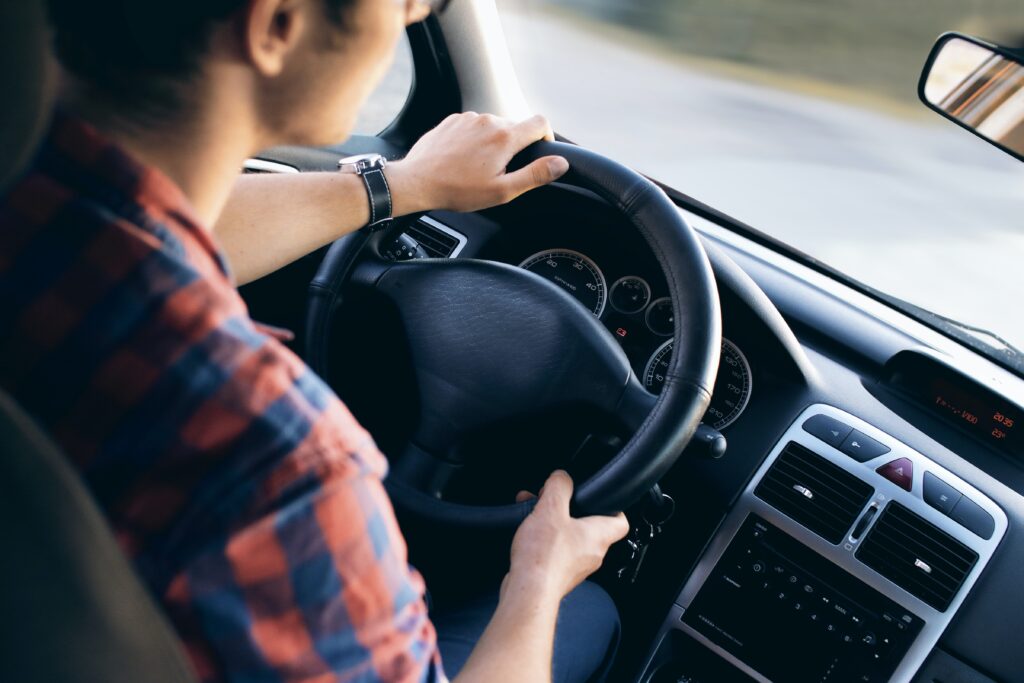Here’s How to Get Paid to Commute
Office building occupancy remains negatively impacted by the pandemic-induced work-from-home revolution, and return-to-office mandates are gaining momentum as managers continue to dismiss both productivity data and employee morale.
Consequently, more workers are once again commuting. And as much as sitting in bumper-to-bumper traffic sucks, there could be a silver lining if you’re looking for additional income.
If you drive at least 30 miles a day, you’re probably missing out on participating in the world’s easiest side hustle — one that literally pays you to commute.
But first, we need to discuss the gig economy, and why in 2023 side hustles haven’t just become ubiquitous … but are now an absolute necessity for many households.
How We Got Here
The IRS has a fairly vague definition of “gig economy”: activity where people earn income providing on-demand work, services or goods. If you can figure out how that’s different than any other type of work, let us know.
What’s vexing about that definition is that it entirely overlooks the fact that Americans with side hustles need supplemental income. These are second (or in some cases third) jobs. They’re what people do to make ends meet, to stay afloat, to keep the lights.
And in case you’ve been living under a rock, here are some figures that’ve contributed to the rapid expansion of the gig economy:
- U.S. home prices, as measured by the Case-Shiller Price Index, are at an all-time high of 306.72.
- Meanwhile, housing affordability, as measured by the U.S. Fixed Housing Affordability Index, is at an all-time low of 87.80.
- After mirroring one another for decades, worker productivity decoupled from pay in 1973, with hourly compensation increasing 109% between then and 2014, while productivity increased at 238.7%. That deviation is more pronounced today.
- Two out of three Americans making between $50k–$100k live paycheck to paycheck.
- And with more people struggling to stay within their budgets, America’s credit card debt now exceeds $1 trillion.
So it’s hardly surprising that 7.7 million Americans report having more than one job. And for those that haven’t found secondary (or tertiary) employment, they’re looking for supplemental income by any means possible … including selling their blood.
When FDR signed the Fair Labor Standards Act of 1938, the minimum wage was established to ensure access to affordable food and shelter. But somewhere between 1938 and 2023, our elected officials shockingly failed to ensure that minimum wage kept apace of cost-of-living increases.
For the record, members of Congress make $174k/year. For the average American, pay is $1,100/week. Unless you’re a woman ($993/week), Black ($913/week) or Hispanic ($851/week).
Since 1938, we went from guaranteeing Americans that their most basic needs could be met to literally selling blood in order to put food on the table and make rent on time.
The Hustle
As a result, 1.5 million Americans drive for Uber and 1.4 million for Lyft, 2 million deliver food for DoorDash and people have made more than 160k vehicles available for rent on Turo.
Add to that 73.3 million Americans who freelance and 5.5% year-over-year growth in professional dog walking services and you start to get the picture.
Once upon a time, the American dream involved a family of four living in an affordable home on a single income while owning two cars and taking two vacations per year.
That dream is dead.
But rather than mourning the past, we want to talk about one side hustle that requires minimal effort and — as previously mentioned — pays you to commute. And since 44% of Americans with a side hustle believe they’ll always need one … the easier the better.
Rolling Billboard
Your car isn’t just a vessel in which you launch profanity-laced rush hour tirades directed at your insufferable boss, who can no longer stand being home with his miserable wife but also doesn’t want to sit in the office alone and is forcing everyone to keep him company.
Chances are, it’s also the source of your second costliest monthly expense. Car payments are at all-time highs ($725 for new cars, $516 for used). At this point, it seems like everything’s at an all-time high except Americans’ bank accounts. So, you should be making your vehicle work for you.
Enter companies like Wrapify, Carvertise, Nickelytics and Stickr, which pay you to become rolling billboards for the companies they work with. And doing so can net you up to $500/month … just for driving to and from work.
You don’t pay out of pocket for the vinyl wrap applied to your car, and each campaign lasts between four and 12 weeks. When one ends, the wrap can be replaced with the next company’s campaign. Lather, rinse, repeat.
The aforementioned companies provide payment via direct deposit or PayPal, are available in all 50 states, have no long-term obligations and have very few restrictions (e.g., you must be 21, your vehicle can’t be over 10 years old, it can’t have a roof rack, etc.).
Best of all, you’re not dealing with bar-hopping inebriates looking for an Uber ride at 2 a.m. And you’re not speeding an order of McDonald’s to some non-tipping couch-dweller instead of enjoying dinner at home with your family. You’re just getting paid to do what you have to do every morning: commute.
TL;DR
To an increasing number of us, the American dream’s unattainable; 7.7 million people have more than one job and 44% of them believe that’ll be the case forever. The gig economy is an unfortunate consequence of our government’s ongoing failure to ensure minimum wage adjustments vis-à-vis cost-of-living increases. If you find yourself driving at least 30 miles a day, a low-demand side hustle like car advertising could offset your expenses or help you save towards a future goal.

